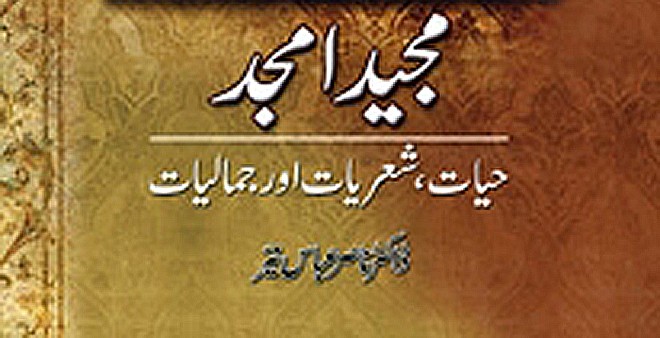
Nayyar starts off with a long and detailed chapter on the life of Majeed Amjad. His ghazals are mostly free from any influence

He came, he saw, and then silently bowed out of the stage. There was applause from the people who knew he was an artist extraordinaire who wasn’t given due credit when he was alive.
Now, when much water has passed under the bridge and it is appropriate to judge his literary genius without a nostalgic tinge, genuine efforts are underway to understand and interpret the literary contribution of Majeed Amjad.
We have seen quite a few books on his works. The year 2014 was declared as Majeed Amjad’s year. Dr Nasir Abbas Nayyar, an outstanding and well-read young critic, has come up with a scholarly tome to pay homage to Majeed Amjad, which is the most important book written so far.
Nayyar has to his credit another short book on the great poet which was written for Pakistan Academy of Letters. The book under review, Majeed Amjad: Hayat Sheriat Aur Jamaliat, covers all aspects of Amjad’s life that were hitherto neglected by critics.
Divided into seven chapters, Nayyar starts off with a long and detailed chapter on the life of Majeed Amjad in which he busts many myths that some of his biographers had created.
He has written about his life story from the earlier days till the day Amjad breathed his last. He takes to task a few ‘friends’ of Amjad who used to make tall claims of their friendship but were nowhere to be seen when he was dying in his dingy room.
A few writers detect religious inclination in his poems of the last days with which Nayyar strongly disagrees. When he finally died in Sahiwal, his body was brought to Jhang in a truck that was used to transport animals from one city to another. At that time, Javed Qureshi was deputy commissioner of Sahiwal who was a poet and writer himself. The author rightly laments that Qureshi could have arranged a better way to transport his body.
Nayyar says that Amjad influenced, more than any other poet, the nazm written in Pakistan after the late sixties. ‘Majeed Amjad gave importance to the neglected things in his surroundings and it was he who instilled aesthetics of locality in his poetry. He didn’t sing paeans of grand narrative about a hollow world either. What he did was that he focused on the ordinary.’
Nayyar distinguishes the ‘nazm’ of Amjad from his contemporaries. He, according to Nayyar, employed ordinary language and gave it an artistic touch with his unbelievable observation of surroundings where he used to breath.
Another distinguished feature of the book is that Nayyar has written a timely essay on ghazals of Majeed Amjad which no critic has focused on so far. His ghazals don’t carry traces or influences of his contemporaries, such as Iqbal, Faiz, Nasir, etc, as his was a voice completely his own.
He claims that Amjad’s ghazals are mostly free from any influence but at times they are under heavy influence of his own nazms. They are not richly adorned or ornate as he was very disciplined as far as the use of language was concerned.
Nayyar has eruditely analysed the recurring themes of death and grief in wonderful and path-breaking poems of Majeed Amjad. These two compact chapters are a real treat to read as the esteemed critic lays bare the larger-than-life poetry of Amjad.
It is not possible to discuss the contents of all the chapters of the book here, but it is quite safe to say that the book under review is the most authentic book and it will definitely be discussed in times to come. The writer also belongs to Jhang and by writing such a compelling book he has paid a debt that he owed. It is a timely book and it should be welcomed with open arms.